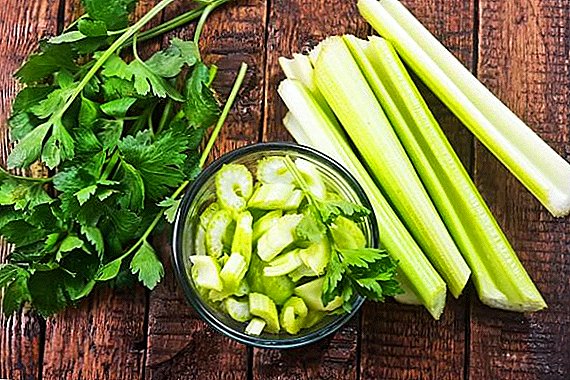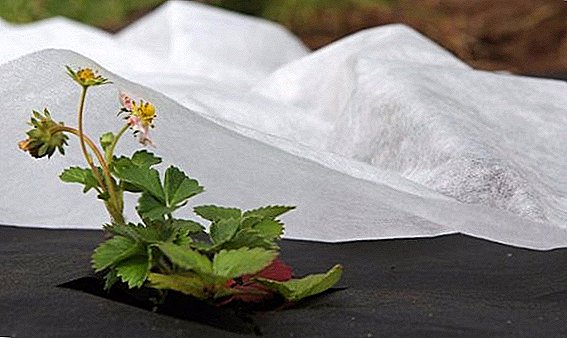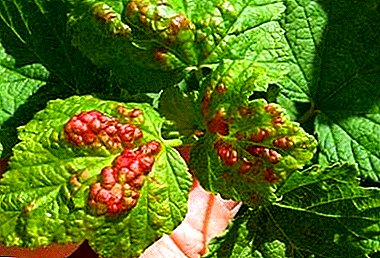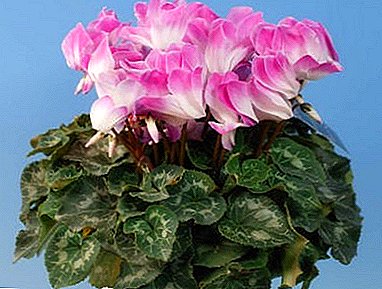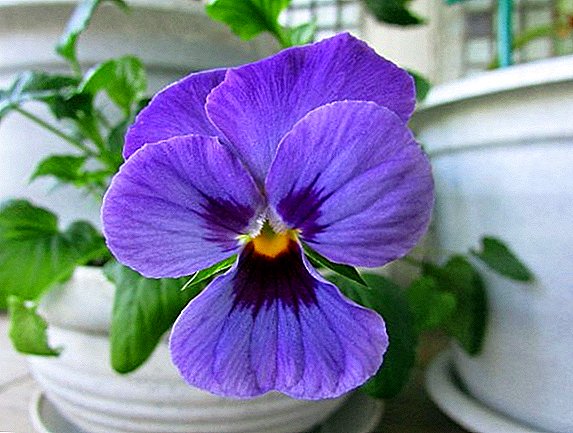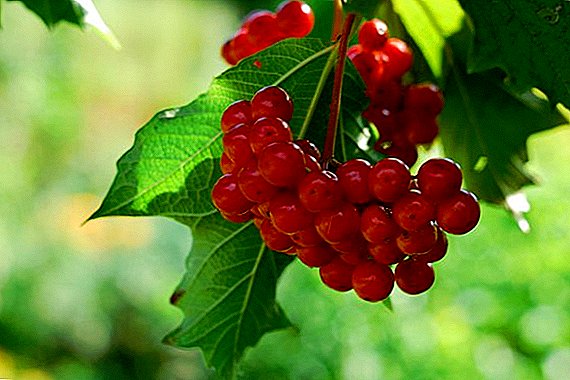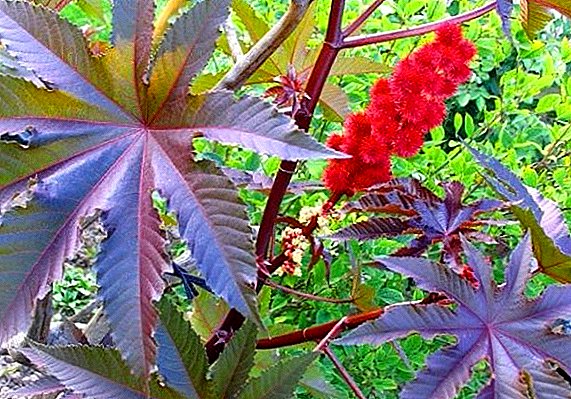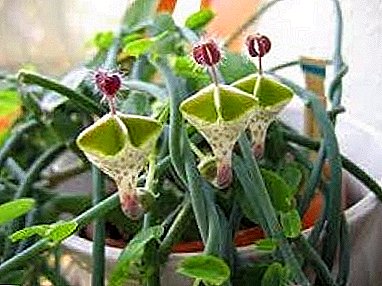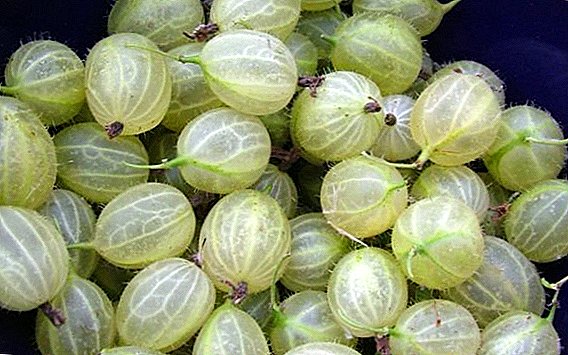 Gooseberry variety "Invicta" refers to high-yielding large-fruited varieties with an early ripening period. This variety is considered a classic, that is studded. Invicta is very popular among farmers, the variety is often chosen for industrial plantings and for cultivation in private farms. The high yield and characteristics of the fruit, unpretentiousness and disease resistance explain the many accolades for this variety.
Gooseberry variety "Invicta" refers to high-yielding large-fruited varieties with an early ripening period. This variety is considered a classic, that is studded. Invicta is very popular among farmers, the variety is often chosen for industrial plantings and for cultivation in private farms. The high yield and characteristics of the fruit, unpretentiousness and disease resistance explain the many accolades for this variety.
Today we will learn how to grow a tasty and healthy berry on your site.
Inference history
Today, Invicta is one of the most common gooseberry varieties in Europe. This variety was bred in the UK, where it is still used for the industrial cultivation of berries.
For the launch of the Invicta, the varieties of Resistant (Resistenta), Winkhams (Whinhams) and Kipsack (Keepsaake) were crossed, from which he inherited the best characteristics.

Description and characteristics
Next, we consider the main characteristics of the bushes and berries, as well as varieties in general.
Shrub
Grow up to 120-160 cm, very sprawling, greatly expand. The stems are straight, of medium thickness, with powerful spines, but they are not located too often. The leaves are dark green, undressed, medium size, glossy. Bushes are fast growing, which must be taken into account when planting.
Find out what features of gooseberry "Beryl", "Spring", "Honey", "Krasnoslavyansky", "Consul", "Malachite", "Grushenka", "Commander", "Kolobok".
Berries
One of the main advantages of the considered varieties are berries. They are characterized by large size - on average, the weight of the berry is 6-7 grams, while it is similar in size to a small plum. There are berries of much greater weight (up to 10-12 grams).
Fruits have a symmetrical oblong shape, up to 2.5 cm in length, are colored in yellow-green color at the stage of ripening or amber color at the stage of full maturity. The rind is elastic, thin, covered with a light nap, the pulp is fragrant, sour-sweet.

The fruits of gooseberry varieties "Invicta" contains a whole set of vitamins and minerals: vitamins C, A, P, group B, salts of potassium, magnesium, sodium, copper, calcium and phosphorus. Also in the composition of a significant percentage of sugars (up to 13%), pectins, malic and citric acids.
Did you know? Gooseberry (English gooseberry), "Christ turn", unripe bunch - such names in English, German and Italian received gooseberry. The origin of these names has not yet been explained by linguists.
Some features of the variety
For the variety of gooseberry "Invicta" is characterized by the following characteristics of the fruit and plant resistance to various external factors.
Disease and Pest Resistance
Invicta is characterized by increased resistance to powdery mildew and other diseases typical of gooseberries. However, if the conditions of detention are violated (for example, when planting bushes in too moisture-intensive soil or when it is over-wetted as a result of frequent watering), the risk of disease increases significantly. Also, farmers note the resistance of this variety to pests of berry crops.

Drought resistance and frost resistance
Gooseberry is a moisture-loving plant, but the stagnation of water for it is destructive. Therefore, during the drought period, generous watering is necessary. Low temperatures "Invicta" tolerates well, it is permissible to grow it in frost-resistant zones of 3-4, that is, the bushes can withstand temperatures up to -40 ° C. In general, the variety is characterized by resistance to temperature extremes.
Find out which gooseberry varieties are popular, which gooseberries are called bearingless.
Ripening period and yield
With proper care for one season from the bush can collect up to 7 kg of berries. Fruiting begins from the last decade of June - in the first half of July, bears fruit until the first half of September inclusive. The first harvest after planting occurs in 2-3 years.
Both annual and two to three year old stems bear fruit. The productivity of the bushes remains at a high level for 12-15 years, which is why they are called long-livers.
Transportability
Despite the delicate skin, the fruits are well tolerated in transportation, do not crack even with long storage. The berries are very well tolerated by freezing, when canned in general, retain their shape and do not boil soft.
Important! Combine harvesting of berries is possible. When hand picking, be sure to wear gloves.

Use of berries
Berries described varieties are universal. You can use them at various stages of maturity - from unripe berries you get excellent compotes, jams and preserves. Mature fruits are consumed fresh as a dessert, added as a filling to pastries, and sauces are made from them. Gooseberry can also be used to make homemade jelly, marmalade, marshmallow, wine and juice.
It is interesting to know: what is the benefit of gooseberry berries, how to prepare gooseberries for the winter, how to pickle gooseberries, how to make jam, jam, homemade wine, gooseberry sauce.
How to choose seedlings when buying
To get high-quality planting material, buy seedlings only in specialized nurseries or garden stores.

When buying seedlings with an open root system (not in containers), pay attention to these key quality characteristics:
- Root system length: up to 15 cm.
- The number of main roots: 2-3 pcs.
- Height of aerial parts: 30-40 cm.
- Number of shoots: 1 (for annual seedlings), 2 (for two-year-old seedlings).
- On seedlings should not be mechanical damage.
- On the shoots should not grow leaves.
- Seedlings should not be dried out, healthy, under the bark should be green, moist, fresh flesh.
- Axillary buds should be closed.
Familiarize yourself with the rules of planting, breeding, cutting gooseberries.When choosing seedlings in containers, the quality requirements are different:
- Shoots should be covered with foliage.
- Shoots should reach 40-50 cm.
- The root length is 15 cm.
- The seedling should sit firmly in the container (this guarantees that a good root system has been formed), but the roots should not break through the holes in the container or through the top, as this indicates a too long period of content in the pot.

Growing conditions
If you want to grow gooseberries and get a rich harvest from the bushes, you need to correctly select the landing site and create acceptable conditions for the plant.
Illumination in this case does not play a special role, since Invicta is able to grow and bear fruit well at different levels of illumination. Equally good result will be as when planting in a sunny place, and in a more shaded, for example, in the penumbra from tree crowns.
But to the soil and moisture requirements are stricter: you must choose a fertile, well-drained soil. The most suitable are loamy or sandy sands.
It is necessary to avoid places of close occurrence of groundwater, wetlands. Gooseberry does not tolerate stagnant water, so in the lowlands, where rain or melt water accumulates, plant the plant also should not be. Landing should be protected from winds and drafts.
Did you know? Before the gooseberry came to America (XIX-XX centuries), breeders bred varieties with a mass of berries of about 50-80 g. However, in the New World, the plant was subjected to powdery mildew, which destroyed most of the varieties. Modern disease-resistant varieties do not have such characteristics of berries as previous types.

Time and landing scheme
Planting culture is carried out in autumn and spring. However, for many gardeners, the autumn planting is preferable, since at positive low temperatures the processes of formation and rooting of the root system proceed well, during the winter time it becomes strong, and the soil near the seedlings is compacted.
When spring planting results will also be good. However, it is extremely important to plant a gooseberry in time between the thawing of the soil and the swelling of the buds on the seedlings. If you are late with planting, the plant will take root very badly.
Pests can negate all the efforts to care for the plant, learn how to protect the gooseberry from pests.So, according to calendar terms, the best time for planting is the beginning of March or the first half of September, before the onset of frost. During the autumn planting, the place must be prepared for a couple of months, and during the spring, it is advisable to carry out preparatory work in the fall.

The landing pit should be of such dimensions - 50x50x50 cm, it is necessary to observe the distance between the bushes - 1.5 m, the distance between the beds - at least 1 m.
Next, you need to fertilize the soil for planting. The dug up earth needs to be mixed with such fertilizers:
- 8-10 g mullein;
- 200 g of superphosphate;
- 40 g of potassium salt (300 g of wood ash can be replaced);
- 100-300 g of crushed limestone.
Find out what are the signs of gooseberry disease.Since "Invicta" grows sprawling and large bush, be sure to build props. To do this, metal poles with a height of 150 cm are installed along the edges of the bed, horizontal wires are stretched on them at the level of 100 and 150 cm, to which the branches of the bushes are tied.

Basics of seasonal care
Young bushes after planting, as well as adult plants need to provide adequate care throughout the season.
Watering
As we indicated earlier, the gooseberry is able to tolerate short-term droughts, however, to obtain large berries and a bountiful harvest, it will be necessary to maintain the soil moisture level at a high level. It is possible to determine that the earthen room is moistened sufficiently, according to such a test - when you take the soil in your hands, it easily crumbles under the touch of your fingers, it feels moist to the touch, but does not stick to the skin and does not have plasticity, like clay, due to excessive moisture.
When watering, the soil under the shrub should be moistened to a depth of approximately 40 cm, depending on the age and size of the shrub, 2-4 buckets per plant may be required. For irrigation use water summer temperature, preferably separated or rain.
Be sure to need watering at such stages:
- when forming ovaries and shoots (end of May - beginning of June);
- at the stage of ripening berries;
- in September to prepare the root system for the winter.
 When forming the ovaries, you should carefully monitor the level of moisture
When forming the ovaries, you should carefully monitor the level of moisture
Soil care
For good fruiting be sure to care for the soil. Care is reduced to such procedures: weeding, digging or loosening, mulching after watering.
It is necessary to dig up and loosen the soil in order to increase air and moisture permeability. You can use a shovel for digging, but loosening needs to be done more delicately - garden forks are suitable.
Removing weeds is also an important step - dense vegetation under the bush increases the humidity of the air, which can trigger the development of fungal diseases.
Another thing is mulching: it allows you to maintain the required level of moisture in the soil and prevent overdrying of the earthy clod. Hay, straw, sawdust, peat are suitable as mulch. Loosening and weeding should be carried out at least once a month.
Important! The gooseberry root system lies close to the surface, so it is necessary to carefully loosen it right under the crown, to a depth of no more than 6-8 cm.

Top dressing
Fertilizers need to be at least twice a year. (frequency depends on soil fertility in your area):
- the first time after flowering to increase yield;
- second time after picking berries to prepare the bush for the winter and the next period of fruiting.
For the first feeding optimal use of organic matter: mullein or litter. They are diluted in water at a ratio of 1:10 or 1:20, respectively. Next, make the soil of this calculation - on 1 square. m will need a 10-liter bucket of mullein solution or 5 liters of litter solution.
For the convenience of making dressing next to the bushes, you can make shallow grooves using a rake, pour fertilizer into them, and after soaking up, fill it with soil.
Mineral dressings are made after picking berries. For 10 liters of water, 10 g of urea, 20 g of superphosphate and 10 g of potassium sulfate will be needed. In the spring, to stimulate the growth of foliage you need to make nitrogenous fertilizers.

For this, a mixture is prepared: 10 l of water and 50 g of ammonium nitrate, a bush is poured from the watering can with a bush from above to make the mixture fall on the shoots and trunks. Next, the soil near the trunk is covered with wood ash (1 tbsp. Per bush) and loosened.
Pruning
Pruning is a mandatory step care throughout the life of the bush. Cut it is necessary in the fall and spring. In young plants up to 3 years, the skeletal branches are shortened by half, and the root growth is almost completely cut off.
In plants from 4 years and older, it is necessary to remove all defective branches: weak, damaged and dried, improperly growing. It is not allowed to thicken the branches. You also need to remove branches older than 5-6 years, since there is almost no crop on them.
Autumn pruning is carried out after the foliage has fallen, in the spring - before bud break. You can also carry out summer pruning to increase the fruiting and size of the berries. For this, the tops of the green shoots are cut so that they have 5-7 leaves.
Learn how to do autumn gooseberry pruning.

Winter cold protection
Invicta tolerates the winter cold very well. But for a successful wintering it is worth doing some preparatory work:
- First, cut off dry, damaged, twisted or lying on the ground branches, remove the fallen leaves.
- Next you need to pour plenty of root zone and plow the soil.
- Care before frosts is a thorough mulching to prevent freezing of the roots. As mulch for the winter, it is better to use humus or peat with a layer of 10-15 cm.
- When the snow falls, the basal zone can be insulated with a layer of 10 cm. And if the winter is frosty but not snowy, you can additionally use any covering material to protect the roots.
Important! Fallen leaves and cut branches are undesirable to use as mulch and covering material. Pests, bacteria and fungi can overwinter in them, and in the spring spread through the rest of the bushes. It is best to immediately burn the collected foliage and branches.
The advantages and disadvantages of the variety

In general, this variety receives positive reviews, which is not surprising, because the number of advantages in it significantly exceeds minor drawbacks:
- The variety is high-yielding. Berries are distinguished by their large size, excellent taste, tenderness and transportability, versatility of use.
- Plants are undemanding in care.
- Shrubs tolerate harsh winters.
- Gooseberry is resistant to powdery mildew and most diseases typical of berry crops.
The described variety is an excellent choice for growing on its own plot. With minimal care, “Invicta” already in the second year will delight the rich harvest of large and tasty berries. The variety is great for people who have not had any previous experience in growing gooseberries.
Video: characteristics of the variety "Invicta"
Variety gooseberry "Invicta": reviews
The berry is large, but with such a load obviously requires feeding.
At the moment, the bushes with a berry. I think in a week it will be possible to pick the first ripe fruits. Illness for 3 years did not notice. Fungicides did not handle even once.
Slightly unripe berries with a pleasant, special aroma.
Sort like. The only thing that is prickly. Highly





